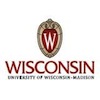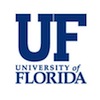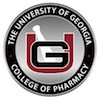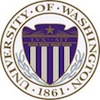Top 50 Public Pharmacy Schools in the US

 11. University of Wisconsin-Madison, School of Pharmacy, Madison, Wisconsin
11. University of Wisconsin-Madison, School of Pharmacy, Madison, Wisconsin
The University of Wisconsin-Madison ranks in the Top 20 among world universities in the annual Academic Ranking of World Universities (ARWU) by Shanghai’s Jiao Tong University. Established in 1848, the school sits on a 936-acre campus and it is home to more than 42,000 students. Program offerings include 157 undergraduate majors, 150 Master’s programs, and 108 Doctoral programs across 20 colleges and schools.
Established in 1883 the University of Wisconsin-Madison School of Pharmacy was the first school of pharmacy to offer a Bachelor’s degree in Pharmacy. The School, which is home to 100+ students, was also the first in the nation to award Doctoral degrees in Pharmaceutical Chemistry, Pharmaceutics, The History of Pharmacy, Social Studies of Pharmacy, and Continuing Education.
Offerings include the Pharm.D., a Ph.D. in Pharmaceutical Sciences, a M.S. in Health System Pharmacy Administration, a M.S. and a Ph.D. in Social & Administrative Sciences in Pharmacy, and a Pharm.D./MPH dual degree.
Other offerings include a B.S. in Toxicology and Certificates in Consumer Health Advocacy, Global Health, Fundamentals of Clinical Research, Type 2 Translational Research, and Patient Safety.
Tuition for the University of Wisconsin-Madison School of Pharmacy is $8,143 per semester for Wisconsin Residents, $12,457 per semester for Minnesota Residents, and $14,372 per semester for non-residents and international residents. Tuition rates include the projected $565 per-semester segregated fees.
 12. University of Florida College of Pharmacy, Gainesville, Florida
12. University of Florida College of Pharmacy, Gainesville, Florida
The University of Florida (UF) began as a small seminary in 1853. More than 50 years later, the University opened to the public in Gainesville with just 102 students. Today, the school is home to nearly 50,000 students and 4,000 faculty members, and it ranks among the Top 20 Public Universities by U.S. News & World Report and Forbes.
The University of Florida sits on a 2,000-acre campus and it houses more than 15 colleges and schools offering 125+ academic programs.
Established in 1923, the University of Florida College of Pharmacy is the oldest college in the University of Florida Health Science Center. The College, which ranks among the best schools of pharmacy in the nation, is home to 1,171 Pharm.D. students and 552 M.S./Ph.D. students. It has four campus locations including Gainesville, Jacksonville, Orlando, and St. Petersburg.
Program offerings include the Pharm.D. and a number of joint degree programs including the B.S. in Nutritional Sciences/Pharm.D., Pharm.D./JD, Pharm.D./MBA, Pharm.D./MPH, and the Pharm.D./Ph.D. The College also offers five areas of Graduate concentration including Medicinal Chemistry, Pharmaceutics, Pharmacodynamics, Pharmaceutical Outcomes and Policy, and Pharmacotherapy & Translational Research.
The College of Pharmacy at UF offers a variety of online programs that may interest those wishing to enter the pharmaceutical industry. Online offerings include M.S. programs in Forensic Science, Pharmaceutical Chemistry, Clinical Toxicology, Pharmacy Regulation - Pharmaceutical Outcomes & Policy, Medication Therapy Management, and Clinical Pharmacy for International Pharmacists.
Resident tuition for the University of Florida College of Pharmacy (Year 1) is $26,687.95. The cost for Year 2 is $25,045.94, for Year 3 the cost it $23,692.30, and tuition for Year 4 is $22,833.70. Non-resident tuition is $49,826.41 for Year 1, $48,189.39 for Year 2, $46,835.86 for Year 3, and $46,052.03 for Year 4.
 13. University of North Carolina Eshelman School of Pharmacy, Chapel Hill, North Carolina
13. University of North Carolina Eshelman School of Pharmacy, Chapel Hill, North Carolina
The University of North Carolina was the first public university in the U.S. Established in 1789. The 729-acre campus houses 17 institutions, including the country’s first public residential high school for gifted students. The University of North Carolina is home to 28,000 students, enrolled in 76 Bachelor's, 108 Master's, 74 Doctorate, and four Professional degree programs.
Founded in 1897, the Eshelman School of Pharmacy is the only public school of pharmacy in North Carolina and one of the oldest in the nation. It ranks among the Top 20 Doctor of Pharmacy programs in the U.S. by U.S. News & World Report and it enrolls around 850 students annually. Offerings include the Pharm.D., a M.S. in Pharmaceutical Sciences with a specialization in health-system pharmacy administration, and four Ph.D. programs including Chemical Biology & Medicinal Chemistry, Molecular Pharmaceutics, Pharmacotherapy & Experimental Therapeutics, and Pharmaceutical Outcomes & Policy.
Tuition for North Carolina residents is $9,731.28 per semester (Fall/Spring) and $1,640 for the Summer session. Tuition for non-residents is $20,963.28 per semester (Fall/Spring) and $4,008 for the Summer session.
 14. University of Pittsburgh School of Pharmacy, Pittsburgh, Pennsylvania
14. University of Pittsburgh School of Pharmacy, Pittsburgh, Pennsylvania
The University of Pittsburgh is one of the nation’s oldest universities. Founded in 1787, this public university is listed among “The Best 378 Colleges” for undergraduate education by Princeton Review. The school, which sits on a 132-acre campus, is home to more than 35,000 students enrolled in 300+ degree programs across 15+ colleges and schools. This includes the School of Pharmacy.
The University of Pittsburgh School of Pharmacy is the oldest school of the University of Pittsburgh's Schools of the Health Sciences. Chartered in 1878, the School of Pharmacy enrolls 100+ students each year and it offers the Pharm.D., a Ph.D. and M.S. Thesis program with four tracks, and a one-year M.S. in Pharmaceutical Sciences. Tracks for both the M.S. and Ph.D. programs include Biochemical Pharmacology, Clinical Pharmaceutical Scientist, Medicinal Chemistry, and Pharmaceutics.
Tuition rates for academic year 2013-2014 are $27,798 for residents and $30,870 per year for non-residents. Tuition for the Graduate program in Pharmaceutical Sciences (M.S. or Ph.D.) is $23,408 per year for residents and $24,110 for non-residents. Tuition for the School of Arts and Sciences Pre-pharmacy program is $16,241 for residents and $26,246 for non-residents.
 15. University of Georgia College of Pharmacy, Athens, Georgia
15. University of Georgia College of Pharmacy, Athens, Georgia
The University of Georgia is the nation’s first state-chartered university. Established in 1785, the University of Georgia ranks among the Top 20 Public Universities by U.S. News & World Report and in the Top 20 by Kiplinger Magazine among “100 Best Values in Public Colleges.” The school, which consists of a 759-acre main campus and nearly 40,000 acres across 30 Georgia counties, is home to 34,475 students enrolled in nearly 400 academic programs across 18+ colleges, schools, and institutes. This includes one of the nation’s oldest schools of pharmacy.
The University of Georgia College of Pharmacy was established in 1903. The College said goodbye to its first graduating class five years later. Today, the College admits around 145 students a year and it offers the Pharm.D., and Graduate programs in Clinical and Administrative Pharmacy, Pharmaceutical and Biomedical Sciences, and Regulatory Affairs & Clinical Trials. In addition, the College of Pharmacy will welcome its very first group of B.S. students in Fall 2013. Upon completion of the program, students will receive a Bachelors of Science (B.S.) in Pharmaceutical Sciences.
Tuition and fees for Georgia residents total $8,449 per semester and $18,449 per semester for non-residents.
 16. University of Arizona College of Pharmacy, Tucson, Arizona
16. University of Arizona College of Pharmacy, Tucson, Arizona
The University of Arizona was established in 1885 as the state’s land-grant university. When it opened, the school had just 32 students, six teachers, and it owned roughly 40 acres of land. The University of Arizona is now home to more than 38,000 students and it occupies around 387 acres of land. The school, which ranks among the Top 20 Public Universities by the National Science Foundation, also operates on the oldest continually maintained green space in the State of Arizona.
The University of Arizona offers more than 300 degree programs across 31 colleges and schools and three campuses. This includes the College of Pharmacy.
Founded in 1947, the University of Arizona College of Pharmacy ranks among the Top 20 Colleges of Pharmacy “in terms of external funding for research, including funding from the National Institutes of Health (NIH).” The College is home to around 471 students (2013) and it offers the Pharm.D. a Dual Pharm.D./Ph.D., and Ph.D. degrees in Drug Discovery and Development, Pharmaceutics & Pharmacokinetics, and Pharmacology & Toxicology.
The College also offers a Pre-pharmacy program and a M.S. and Ph.D. in Pharmaceutical Economics, Policy, and Outcomes.
Tuition and fees are based on number of units and residency status. For all programs besides the Pharm.D. program, Arizona residents pay $2,471.85 for 3 units, $4,913.85 for 6 units, and $5,762.85 for 7+ units. Non-resident tuition and fees are $4,616.85 for 3 units, $9,203.85 for 6 units, and $13,698.85 for 9+ units.
Resident tuition and fees for the Pharm.D. program are $11,887.85 for 9+ units and $19,823.85 for 9+ units for non-residents.
 17. University of Tennessee College of Pharmacy, Memphis, Tennessee
17. University of Tennessee College of Pharmacy, Memphis, Tennessee
The University of Tennessee was once home to iconic authors Alex Haley and Kurt Vonnegut as well as famous athletes such as Peyton Manning and the late Reggie White. Established in Knoxville in 1794 as Blount College, the school became a land-grant university in 1869 and it was renamed the University of Tennessee in 1879.
With a student population of 49,556, the University of Tennessee has four campuses including Knoxville (main), Chattanooga, Martin, and the Health Science Center in Memphis. The main campus sits on 560 acres and it houses 11 colleges offering 300+ degree programs and 170+ majors, concentrations, and specializations.
The University of Tennessee College of Pharmacy is located at the Health Science Center in Memphis. The College opened to the public at the University’s Knoxville campus in 1898. Today, the College has two campuses—Memphis and Knoxville, and it ranks among the Top 20 Pharmacy Schools in the nation by U.S. News & World Report
One of the first pharmacy schools to grant the Pharm.D. degree (1969) and one of the first to adopt the Pharm.D. as the entry-level degree (1984), the College of Pharmacy offers a Pharm.D./Ph.D. dual degree, and Ph.D. degrees in four areas including Medicinal Chemistry, Bioanalysis, Pharmaceutics, and Pharmacometrics.
Resident tuition for the Memphis campus is $10,687 for 9+ credit hours and $20,472 for 9+ credits for non-residents. Resident tuition for the Knoxville campus (years 2 and 3) is $10,870.50 for 9+ credits and $20,655.50 for non-residents. Resident tuition for year four is $10,834.50 for 9+ credits and $20,619.50 for non-residents.
 18. University of California, San Diego - Skaggs School of Pharmacy and Pharmaceutical Sciences, San Diego, California
18. University of California, San Diego - Skaggs School of Pharmacy and Pharmaceutical Sciences, San Diego, California
The University of California San Diego (UC San Diego) is one of the youngest universities in the U.S., but this school has already established an enviable reputation in the academic world. Established on November 18, 1960, the school currently ranks among the Top 20 Public Universities in the Nation by U.S. News & World Report.
The school, which began with just 63 acres of donated land, now sits on more than 1,200 acres of coastal woodland and it is home to 29,052 students. The University of San Diego also offers more than 100 fields of study, across 10 divisions and schools. This includes the Skaggs School of Pharmacy and Pharmaceutical Sciences
The Skaggs School of Pharmacy is home to 240 Pharm.D. students, 60 Ph.D. students, and 30 pharmacy residents. Offerings include the Pharm.D., a Pharm.D./Ph.D. program, and a B.S. in Chemistry/Pharm.D.
Resident tuition for the Skaggs School of Pharmacy and Pharmaceutical Sciences is $11,762.50 per semester and $15,844.50 per semester for non-residents.
 19. University of Iowa College of Pharmacy, Iowa City, Iowa
19. University of Iowa College of Pharmacy, Iowa City, Iowa
The University of Iowa is the state’s first public institution of higher learning. Established in 1847, the University was also the first school west of the Mississippi to establish a law school and an educational radio station. Today, the University of Iowa ranks among the Top 50 Public Universities in the country.
Home to 30,500 students, the University of Iowa has one of the largest student bodies in the Midwest. The school, which sits on a 1,900-acre campus, offers more than 100 academic programs across 11 colleges—including the College of Pharmacy.
Founded in 1885, the University of Iowa College of Pharmacy is the 4th oldest College of Pharmacy in a state-supported university. In addition, around 48 percent of Iowa pharmacists graduate from the College. Home to 410 Professional students and 73 Graduate students, the College of Pharmacy offers the Pharm.D., which ranks among the Top 20 Pharmacy Schools in the U.S., a Pharm.D./MPH, and several Ph.D. programs.
Ph.D. offerings include Pharmaceutics, Clinical Pharmaceutical Sciences, Pharmaceutical Socioeconomics, and Medicinal and Natural Products Chemistry. The College also offers a M.S. in Pharmaceutics.
Tuition and mandatory fees for the College of Pharmacy are $10,692 per semester for Iowa residents and $19,294 per semester for non-residents.
 20. University of Washington School of Pharmacy, Seattle, Washington
20. University of Washington School of Pharmacy, Seattle, Washington
The University of Washington was founded in 1861. When it opened, the school consisted of just 10 acres and a few students. Today, the school sits on more than 700 acres and it is home to more than 49,000 students. The University of Washington offers more than 100 academic programs across 16 colleges and schools, and three campuses.
In addition to the Seattle campus (main), the University of Washington houses a 46-acre campus in Tacoma, Washington and a 128-acre campus in Bothell, Washington. The University of Washington School of Pharmacy is located at the Seattle campus, along with the Departments of Medicinal Chemistry and Pharmaceutics.
Established in 1894, the University of Washington School of Pharmacy is the nation's 51st school of pharmacy. The School, which opened with just 21 students, is now home to nearly 500 students. Offerings include the Pharm.D., Ph.D. degrees in Medicinal Chemistry, Pharmaceutics, Medicinal Chemistry, Pharmaceutical Outcomes Research & Policy Program (PORPP), and M.S. degrees in Pharmaceutics and Pharmaceutical Outcomes Research & Policy Program.
The School also offers a Professional M.S. in Biomedical Regulatory Affairs and several dual degrees including the Pharm.D./Physician Assistant, Pharm.D./M.S., and the Pharm.D./Ph.D.
Resident tuition and fees total $26,328 per year and $47,964 per year for non-residents.
Pages

- Facebook Like
- Google Plus One
- 272061 reads


